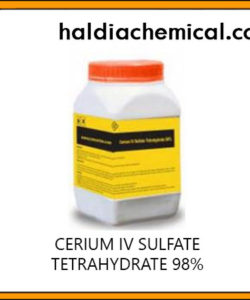Description
Significance and Use
The methanol wall wash test is performed to determine the cleanliness and suitability of cargo tanks or compartments on a marine vessel prior to loading of high quality requirement like polyester grade monoethylene glycol. As it is adversely affected by oxygen, hydrocarbons, water and chloride. It is especially susceptible to aromatic contamination, which degrades UV transmittance. Possible sources of contamination are the prior cargoes and cleaning agents. The methanol wall wash procedure provides a representative sampling of the impurities and contamination present on the sides of the cargo tank.
This test method covers the methanol wall wash procedure and the chemical and physical analysis of the wall wash sampling for cargo tanks of marine vessels handling polyester grade monoethylene glycol.
The methanol wall wash procedure provides a representative sampling of the impurities and contamination present on the sides of the cargo tank. The test methods used for analysis of the methanol wall wash samples are capable of determining low levels of impurities or contamination in methanol. These tests include appearance, color, hydrocarbons and chloride.
The producers of sensitive cargo like polyester grade monoethylene glycol need confirmation of the cleanliness and suitability of the marine vessel’s tanks prior to loading with in-specification material. Cargo tanks that do not pass the wall wash test should not be loaded.
Technical Bulletin
Label
LABEL PROPERTY
Physical State ………………………………………………………………………… Liquid
Appearance ……………………………………………………………………………. Clear, colorless
Odor ……………………………………………………………………………………… alcohol-like – weak odor
pH ………………………………………………………………………………………… Not available.
Vapor Pressure ………………………………………………………………………… 128 mm Hg @ 20 deg C
Vapor Density ………………………………………………………………………….. 1.11 (Air=1)
Evaporation Rate ………………………………………………………………………. 5.2 (Ether=1)
Viscosity ………………………………………………………………………………… 0.55 cP 20 deg C
Boiling Point …………………………………………………………………………….. 64.7 deg C @ 760.00mm Hg
Freezing/Melting Point ……………………………………………………………….. 98 deg C
Autoignition Temperature …………………………………………………………….. 464 deg C ( 867.20 deg F)
Flash Point ……………………………………………………………………………….. 11 deg C ( 51.80 deg F)
Decomposition Temperature ………………………………………………………….. Not available.
NFPA Rating ……………………………………………………………………………… (estimated) Health: 1; Flammability: 3; Reactivity: 0
Explosion Limits, Lower…………………………………………………………………. 6.0 vol %
Explosion Limits Upper ………………………………………………………………….. 36.00 vol %
Solubility ……………………………………………………………………………………… miscible
Specific Gravity/Density …………………………………………………………………… 7910g/cm3
Molecular Formula ………………………………………………………………………….. CH4O
Molecular Weight …………………………………………………………………………… 32.04

